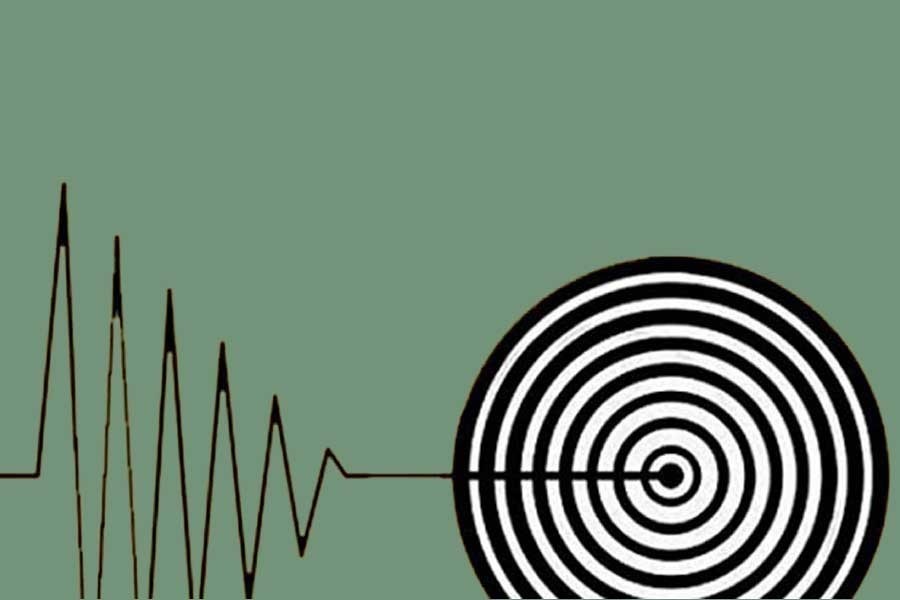The bellwether appears clear for the authorities to change their indifference towards protecting Bangladesh from the looming threat of earthquakes. Seismologists feel that their preoccupation with economic development possibly insulated the authorities against repeated prognoses that devastating quakes could shatter the nation's dreams of rapid economic advances.
One hears the authorities talk about earthquakes when a tremor jolts Bangladesh, only to forget about the pressing issue pretty soon.
Out of panic people jump from tall buildings to get injured and lose family members and neighbours. Reporters rush to the scene to cover what happened to traumatised families, talk-show hosts are seen spending busy time with experts and officials about what should be done, only to forget the whole matter too soon.
Experts blame the authorities' traditional short memory for keeping the issue on the backburner. People have become used to post- tremor indifference of the authorities.
None says that nothing has been done as regards earthquake preparedness. In fact, the Fire Service and Civil Defence and the Armed Forces Division have taken contingency plans and held post- quake drills. But they were far short of what needs to be done without further delay.
According to Earthquake Disaster Risk Index 2010, the densely populated city of Dhaka, located on the juncture of three tectonic plates, is among the 20 most vulnerable cities to quakes. An earthquake will not only kill or injure people but also displace millions.
The densely populated Bangladesh is also on the juncture of three tectonic plates: the Indian plate to the west and southwest, the Tibet sub-plate to the north and the Burma plate to the east. As the plate boundary between India and Burma passes through Bangladesh, these tectonic plates had caused devastating quakes in Bangladesh in the past.
Apprehensions are rife that Bogra Fault, Tripura Fault, Dauki Fault and Assam Fault Zone could rock Bangladesh with a quake of 7 to 8.5 magnitudes.
In the past, the Dauki Fault caused high-magnitude seismic activities and impacts, notably the magnitude- seven Cachar quake that struck Sylhet and Shilchar in 1869.Though inactive now, the Dauki Fault poses ''serious threat to Bangladesh'', say seismologists.
Between 1997 and 2018, over 13 tremors with magnitudes of more than 4.5 on the Richter scale rocked Bangladesh, some of which had the epicentre within the country.
A 2016 study published in the science journal NATURE shows that scientists have discovered new evidence of a fault buried deep under river sediments that could rock Bangladesh with a quake of 8.2 to 9.0 magnitudes to affect about 140 million people in Bangladesh, India and Myanmar as well as change the courses of great rivers. And the city of Dhaka is well within the potential zone of destruction.
Experts have the consensus that rapid urbanisation in Bangladesh has increased a greater vulnerability of the country to seismic events for failure to develop adequate preparedness to minimise the destruction.
There is no denying, however, that the capacity of the Fire Service and Civil Defence has been improved, equipping it with modern search-and-rescue facilities. But are they enough to meet possible exigencies?
Bangladesh is globally praised for having in place mitigation measures against cyclones and floods , but can this be said about the country's quake preparedness?
No denying that the authorities are credited for making sector-specific risk-assessment guidelines and mapping for earthquake for the cities of Dhaka, Chattogram and Sylhet and for medium and small urban areas, as well as for tsunami in 13 coastal districts.
Seismic micro-zoning of Dhaka City has been done along with ising probabilistic calculation of peak ground acceleration levels, estimation of predominant period of local amplification for micro-tremors and amplification of each geomorphology.
Three new earthquake observatories have been established with four seismometers and 30 accelerometers in earthquake- vulnerable locations .A National Earthquake Contingency Plan has been developed for anticipating future earthquake risks with plans for debris management and management of the bodies of the dead.
With support from the GFDRR, Bangladesh has also developed Guidebooks on City Earthquake Risk Atlas, Legal and Institutional Frameworks, Dhaka Risk-Sensitive Land Use Planning and an Information, Education, Communication and Capacity Building Roadmap as part of quake-preparedness programme for the city of Dhaka.
Under its Comprehensive Disaster Management Programme (CDMP) Phase I and II, the Ministry of Disaster Management and Relief (MoDMR) has developed an urban risk assessment (URA) methodology which is widely used by different actors to develop urban risk assessment of Sylhet, Rangpur and parts of Dhaka and Chittagong.
With support from the UNDP, Bangladesh has developed seismic exposure level and contingency plan for Mymensingh city.
In 2005, Chittagong City Corporation developed earthquake- risk atlas of the city with support from NGOs and the European Commission Humanitarian Aid Office.
The revised Bangladesh National Building Code awaits approval from the authorities.
Experts called for adopting measures to minimise gaps in urban planning to reduce the risks of damage and destruction that could be caused by quakes by decentralising urban governance and empowering elected city bodies to make comprehensive plans and for their implementation.
Water supply, sanitation, faecal sludge- management system should be in place at all the evacuation centres, locations and open spaces.
There should also be healthcare, energy supply and shelter to prevent post-earthquake deaths due to cold, waterborne diseases or lack of essential services and trauma counsellors to provide psychosocial support to survivors.


